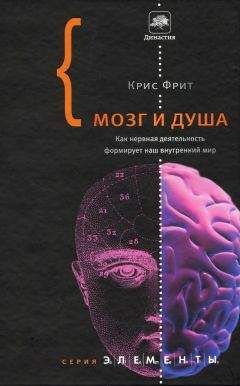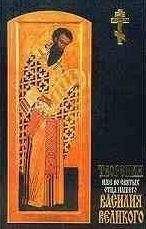Ричард Дэвидсон - Пламя Яхве. Сексуальность в Библии

Помощь проекту
Пламя Яхве. Сексуальность в Библии читать книгу онлайн
2287
Более детальное обсуждение Рим 1:24–27 см. особенно в: Gagnon, Bible and Homosexual Practice, 229–303; ср. James B.DeYoung, Homosexuality: Contemporary Claims Examined in Light of the Bible and Other Ancient Literature and Law (Grand Rapids: Kregel, 2000), 139–173; Richard B.Hays, The Moral Vision of the New Testament: A Contemporary Introduction to New Testament Ethics (San Francisco: Harper, 1996), 383–389; Ronald M.Springett, Homosexuality in History and the Scriptures: Some Historical and Biblical Perspectives on Homosexuality (Washington, D.C.: Biblical Research Institute, 1988), 120–131.
2288
Обоснование данной интерпретации и критику альтернативных точек зрения см. особенно в: Gagnon, Bible and Homosexual Practice, 306–312.
2289
Дальнейшее обсуждение 1 Кор 6:9 и 1 Тим 1:10, а также ключевых греческих терминов malakoi и arsenokoitai, см. особенно в: ibid., 303–313. Гэгнон справедливо заключает: «Иудей или христианин I века считал бы запреты Лев 18:22 и 20:13 абсолютными и касающимися любой сексуальной связи между мужчинами, несмотря на то что основные примеры такой практики ограничивались педерастией» (с. 330). Ср. DeYoung, Homosexuality, 175–203; Hays, Moral Vision, 382–383.
2290
См. Ronald A.G.du Preez, Polygamy in the Bible (Adventist Theological Society Dissertation Series 3; Berrien Springs, Mich.: ATS, 1993), 246–250.
2291
См., например, F.W.Grosheide, The First Epistle to the Corinthians (NICNT; Grand Rapids: Eerdmans, 1953), 155: «Слова «каждый… свою» предполагают моногамный брак… слово «имей» показывает, что моногамный брак – это заповедь. Затем то же самое повторяется применительно к каждой женщине».
2292
См., например, Grosheide, ibid., 167–172, который пытается доказать, что эти стихи относятся не к внешним обстоятельствам, а к «внутренним обстоятельствам, связанным с христианским призванием».
2293
См., например, Ralph Earle, “1 Timothy,” EBC 11:364: «Большинство комментаторов согласны, что (эта фраза в Посланиях к Титу и Тимофею. – Р. Д.) означает моногамию (единобрачие) и необходимость полной верности блюстителя своей жене». Ср. Ed Glasscock, “The Husband of One Wife Requirement in 1 Timothy 3:2,” BSac 140 (1983): 244–258. Подробнее об этих отрывках (1 Кор 7:1–4; 1 Тим 3:2, 12; Тит 1:6) см. особенно: du Preez, Polygamy in the Bible, 256–268.
2294
По этому вопросу см. особенно синтез в: John Temple Bristow, What Paul Really Said about Women (San Francisco: Harper&Row, 1988), 1–30; Randall D.Chesnutt, “Jewish Women in the Greco-Roman Era,” in Essays on Women in Earliest Christianity (ed. Carroll D.Osburn; 2 vols.; Joplin: Mo.: College Press, 1993), 1:93–130; Hurley, Man and Woman, 58–78; Ben Witherington III, Women in the Earliest Churches (SNTSMS 59; New York: Cambridge University Press, 1988), 5–23. Ср. Tat Ilan, Integrating Women into Second Temple History (Tübingen: Mohr Siebeck, 1999; repr., Peabody, Mass.: Hendrickson, 2001); idem, Jewish Women in Greco-Roman Palestine (Peabody, Mass.: Hendrickson, 1995); Amy-Jill Levine, ed., “Women Like This”: New Perspectives on Jewish Women in the Greco-Roman World (Williston, Vt.: Society of Biblical Literature, 1991); Deborah F.Sawyer, Women and Religion in the First Christian Centuries (New York: Routledge, 1996); Gregory E.Sterling, “Women in the Hellenistic and Roman Worlds (323 B.C.E.-138 C.E.),” in Essays on Women in Earliest Christianity (ed. Carroll D.Osburn; 2 vols.; Joplin, Mo.: College Press, 1993), 1:41–92; Chesnutt, “Jewish Women.”
2295
Общий обзор см. особенно в: Witherington, Women in the Earliest Churches, 128–182. Ср. обобщения в: Clarence Boomsma, Male and Female, One in Christ: New Testament Teaching on Women in Office (Grand Rapids: Baker, 1993), 21–26; Jo Ann Davidson, “Women in Scripture: A Survey and Evaluation,” in Women in Ministry: Biblical and Historical Perspectives (ed. Nancy Vyhmeister; Berrien Springs, Mich.: Andrews University Press, 1998), 172–186; Mary Ann Getty-Sullivan, Women in the New Testament (Collegeville, Minn.: Liturgical Press, 2001); Margaret Y.MacDonald, “Was Celsus Right? The Role of Women in the Expansion of Early Christianity,” in Early Christian Families in Context: An Interdisciplinary Dialogue (ed. David L.Balch&Carolyn Osiek; Grand Rapids: Eerdmans, 2003), 157–184; Mary T.Malone, The First Thousand Years (vol. 1 of Women&Christianity; Maryknoll, N.Y.: Orbis Books, 2000), 43–85. Об отдельных женщинах в НЗ (с библиографией) см. особенно: Carol Meyers, Toni Craven&Ross S.Kraemer, eds., Women in Scripture: A Dictionary of Named and Unnamed Women in the Hebrew Bible, the Apocryphal/Deuterocanonical Books, and the New Testament (Boston: Houghton Mifflin, 2000), passim. Я подчеркиваю факты, свидетельствующие в пользу возвышения женщин в НЗ, но не хочу сказать, что тенденция к возвышению женщин была единственно лишь христианским феноменом. Как было отмечено в конце главы 6, попытки повысить статус женщин делались и в иудаизме приблизительно во времена зарождения христианства. См. предупреждение против «христианского антииудаизма» в изображении Иисуса как «феминиста I века», боровшегося с тогдашним иудаизмом: например, Glenna Jackson, “Jesus as First-Century Feminist: Christian Anti-Judaism?” FemT 19 (1998): 85–98.
2296
Об отношении Иисуса к женщинам и о женщинах в Евангелиях и Деяниях см. особенно: Ben Witherington III, Women and the Genesis of Chri-stianity (ed. Ann Witherington; Cambridge: Cambridge University Press, 1990), 29–120, 201–236; idem, Women in the Ministry of Jesus: A Study of Jesus’ Attitudes to Women and Their Roles as Reflected in His Earthly Life (SNTSMS 51; Cambridge: Cambridge University Press, 1984). Ср. Judy L.Brown, Women Ministers according to Scripture (Minneapolis: Christians for Biblical Equality, 1996), 119–150; Colleen M.Conway, Men and Women in the Fourth Gospel: Gender and Johannine Characterization (SBLDS 167; Atlanta: Society of Biblical Literature, 1999); Kathleen E.Corley, Private Women, Public Meals: Social Conflict in the Synoptic Tradition (Peabody, Mass.: Hendrickson, 1993); Davidson, “The Well Women of Scripture Revisited,” 220–228; Janeth Norfleete Day, The Woman at the Well: Interpretation of John 4:1–42 in Retrospect and Prospect (Boston: E.J.Brill, 2002); David J.Hamilton, “Jesus Broke Down the Walls,” in Loren Cunningham&David J.Hamilton with Janice Rogers, Why Not Women? A Fresh Look at Women in Missions, Ministry, and Leadership (Seattle: YWAM, 2001), 111–128; Andreas J.Köstenberger, Studies on John and Gender: A Decade of Scholarship (StBL 38; New York: Peter Lang, 2001); William E.Phipps, Assertive Biblical Women (CWS 128; Westport, Conn.: Greenwood, 1992), 105–118; Walter F.Specht, “Jesus and Women,” in Symposium on the Role of Women in the Church (ed. Julia Neuffer; Washington, D.C.: General Conference of Seventh-day Adventists, 1984), 78–96; Aída Besançon Spencer, “Jesus’ Treatment of Women in the Gospels,” in Discovering Biblical Equality: Complementarity without Hierarchy (ed. Ronald W.Pierce&Rebecca Merrill Groothuis; Downers Grove, Ill.: InterVarsity, 2004), 126–141; Bonnie Thurston, Women in the New Testament: Questions and Commentary (New York: Crossroad, 1998), 62–128; Ruth A.Tucker&Walter Liefeld, Daughters of the Church: Women and Ministry from New Testament Times to the Present (Grand Rapids: Zondervan, 1987), 19–51; Satoko Yamaguchi, Mary and Martha: Women in the World of Jesus (Maryknoll, N.Y.: Orbis Books, 2002). Относительно феминистской точки зрения см., например, Amy-Jill Levine&Marianne Blickenstaff, eds., A Feminist Companion to Luke (FCNTECW 3; London: Sheffield Academic Press, 2002); idem, A Feminist Companion to John (2 vols.; FCNTECW 4; New York: Sheffield Academic Press, 2003); idem, A Feminist Companion to Matthew (FCNTECW 1; Sheffield, Eng.: Sheffield Academic Press, 2001); Ivoni Richter Reimer, Women in the Acts of the Apostles: A Feminist Liberation Perspective (trans. Linda M.Maloney; Minneapolis: Fortress, 1995; Turid Karlsen Seim, The Double Message: Patterns of Gender in Luke and Acts (Nashville: Abingdon, 1994).
2297
См., например, James Malcolm Arlandson, Women, Class, and Society in Early Christianity: Models from Luke-Acts (Peabody, Mass.: Hendrickson, 1997); Bristow, What Paul Really Said about Women, passim; Brown, Women Ministers, 151–185; David J.Hamilton, “Paul Turned His World Upside Down,” in Cunningham&Hamilton with Rogers, Why Not Women? 139–140; Andrew C.Perriman, Speaking of Women: Interpreting Paul (Leicester, Eng.: Apollos/Inter-Varsity, 1998); Phipps, Assertive Biblical Women, 11:9–31; Thurston, Women in the New Testament, 30–61, 129–155; Tucker&Liefeld, Daughters of the Church, 53–87. Относительно феминистской точки зрения см.: Seim, Double Message, passim; Amy-Jill Levine&Marianne Blickenstaff, eds., A Feminist Companion to Paul (FCNTECW 6; London: T&T Clark, 2004); idem, A Feminist Companion to Paul: Deutero-Pauline Writings (JSNTSup 7; New York: Continuum, 2003).
2298
См. Ute E.Eisen, Women Officeholders in Early Christianity: Epigraphical and Literary Studies (Collegeville, Minn.: Liturgical Press, 2000); Karen Jo Torjesen, When Women Were Priests: Women’s Leadership in the Early Church and the Scandal of Their Subordination in the Rise of Christianity (San Francisco: Harper, 1993).
2299
Подробную библиографию книг и статей, написанных представителями обоих направлений (а также исследователями, которые не принадлежат ни к одному из этих направлений) см. особенно в: Wayne A.Grudem, Evangelical Feminism and Biblical Truth: An Analysis of More Than One Hundred Disputed Questions (Sisters, Ore.: Multnomah, 2004), 767–781. В этом списке особым образом выделены работы, которые четко принадлежат к «эгалитарному» или «комплементарному» (иерархическому) направлениям в евангельском христианстве.
2300
См. Richard M.Davidson, “Headship, Submission, and Equality in Scripture,” in Women in Ministry: Biblical and Historical Perspectives (ed. Nancy Vyhmeister; Berrien Springs, Mich.: Andrews University Press, 1998), 273–295.
2301
1 Кор 11:3; Еф 1:22; 4:15; 5:23; Кол 1:18; 2:10, 14.
2302
См. особенно Berkeley Mickelsen&Alvera Mickelsen, “What does kephalē Mean in the New Testament?” in Women, Authority and the Bible (ed. Alvera Mickelsen; Downers Grove, Ill.: InterVarsity, 1986), 97–110; Gilbert G.Bilezikian, Beyond Sex Roles: What the Bible Says about a Woman’s Place in Church and Family (Grand Rapids: Baker, 1985), 215–252; Catherine Clark Kroeger, «The Classical Concept of Head as “Source,”» in Equal to Serve: Women and Men in the Church and Home (ed. Gretchen G.Hull; Old Tappan, N.J.: Fleming H.Revell, 1987), 267–283; Gordon D.Fee, The First Epistle to the Corinthians (Grand Rapids: Eerdmans, 1987), 502–503. По-видимому, толчок к исследованиям в этом направлении дала статья: Stephen F.B.Bedale, “The Meaning of kefal» in the Pauline Epistles,” JTS 5 (1954): 211–215.
2303
См. Wayne A. Grudem, «Does KEFALH (“Head”) Mean “Source” or “Authority over” in Greek Literature? A Survey of 2,336 Examples,» TJ 6 (1985): 38–59; idem, «The Meaning of Kefal» (“Head”): A Response to Recent Studies,» TJ 11 (1990): 3–72; repr. in Recovering Biblical Manhood and Womanhood: A Response to Evangelical Feminism (ed. John Piper&Wayne A. Grudem; Wheaton, Ill.: Crossway, 1991), 425–468; Joseph A. Fitzmyer, “Another Look at KEFALH in 1 Corinthians 11:3,” NTS 35 (1989): 503–511. Ср. BDAG 431, где дано следующее значение слова kephalē: «применительно к живым существам обозначает более высокий ранг».

























